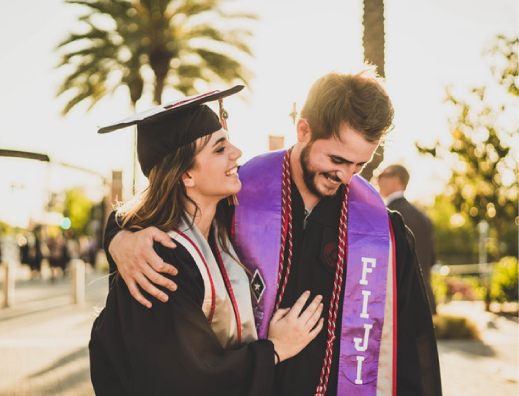-vancouver-campus/AZ-bachelor-of-art-history.jpg)
-vancouver-campus/AZ-bachelor-of-art-history.jpg)
Complete four or more consecutive years of recognized, full-time education in English within Canada immediately prior to attending UBC.
Complete four or more consecutive years of full-time education in English in a country other than Canada where English is the principal language. These four years must be immediately prior to attending UBC.
Achieve a final exam grade of 70% or better on the provincial examination portion of Alberta English Language Arts 30-1, BC English 12 (achieved August 2019 or earlier), or equivalents.
Achieve a final grade of 4 or better on Advanced Placement (AP) English Language & Composition or AP Literature & Composition; or achieve a final grade of 5 or better on International Baccalaureate English A (higher-level or standard-level).
Achieve the competence standard indicated by one of the tests of English language proficiency that evaluates skills in listening, reading, speaking, and writing.
Successfully complete six credits of post-secondary first-year English studies at a recognized university in an English-speaking country. You must submit a transcript showing completion of these courses by February 15. For students at North American post-secondary institutions registered in English courses in the January to April term, we will accept a final transcript showing completion of these courses until May 15, if there are spaces left in your degree.
Graduate from a recognized degree program at an accredited university at which English is the primary language of instruction in a country where English is the principal language.
Attend four or more years at an eligible international secondary school that uses English as the language of instruction but operates in a country where the primary language is not English. These four years must be immediately prior to attending UBC. You will need to submit a transcript as soon as possible to UBC’s Undergraduate Admissions Office.
Achieve a UBC Certificate in English Language or CEL by completing Level 600 of the UBC English Language Institute’s English for Academic Purposes program on UBC’s Vancouver campus.
CAELCanadian Academic English Language assessmentOverall 70Cambridge English QualificationsB2 First
C1 Advanced
C2 Proficiency180CELUBC Certificate in English600IELTSInternational English Language Testing System (Academic)6.5, with no part less than 6.0PTEPearson Test of English (Academic)Overall: 65
Reading: 60
Listening: 60
Writing: 60
Speaking: 60TOEFLTest of English as a Foreign Language Internet-based test (UBC’s institution code is 0965)Overall: 90
Reading: 22
Listening: 22
Writing: 21
Speaking: 21
Examine a wide range of art historical periods and topics, as well as critical theories, while taking into account the constantly extending reach of visual studies in a globalized world. Many fields connect and inform art historical study – you can find a wide variety of courses in other Faculty of Arts departments to complement your studies.
Art History provides you with an excellent foundation for further advanced studies. Through a progression of courses, you’ll learn how to analyze and compare images and material culture from a broad variety of cultural contexts, integrate different kinds of information gleaned from historical research and critical reflection, and develop synthetic arguments concerning the impact of images, art, and media in society.
You can choose a combination of art historical and studio practice courses geared toward the development of skills in visual analysis and art historical research. Courses are taught in a lively atmosphere of instructor-led debate, discussion, and critique. Majors may concentrate in one of three areas: arts of Europe and the Americas, arts of indigenous Americans (pre-Hispanic and First Nations), or arts of East and South Asia.
More Info: Click here

Students of Art History will experience the breadth of the field by exploring the history and diversity of the discipline through research-based learning and practice. Upon completion, graduates will have an international calling card to not only enlighten the world on Art History, but also to expand on the ever increasing significance of visual culture in today’s rapidly evolving digital society.
Fields of work include:
Cultural heritage and art institutions (e.g., public or commercial galleries, as well as artist run centres)
Art practice
Design and architecture
Education
Academic work in art history or cognate fields in the humanities
Policy, diplomacy, and international relations
Advertising and marketing
Publishing
Journalism
Law
Political science

Medical Insurance: 500 CAD per year